Final Mission Summary
Transatlantic Mars Crew 261
May 12, 2023
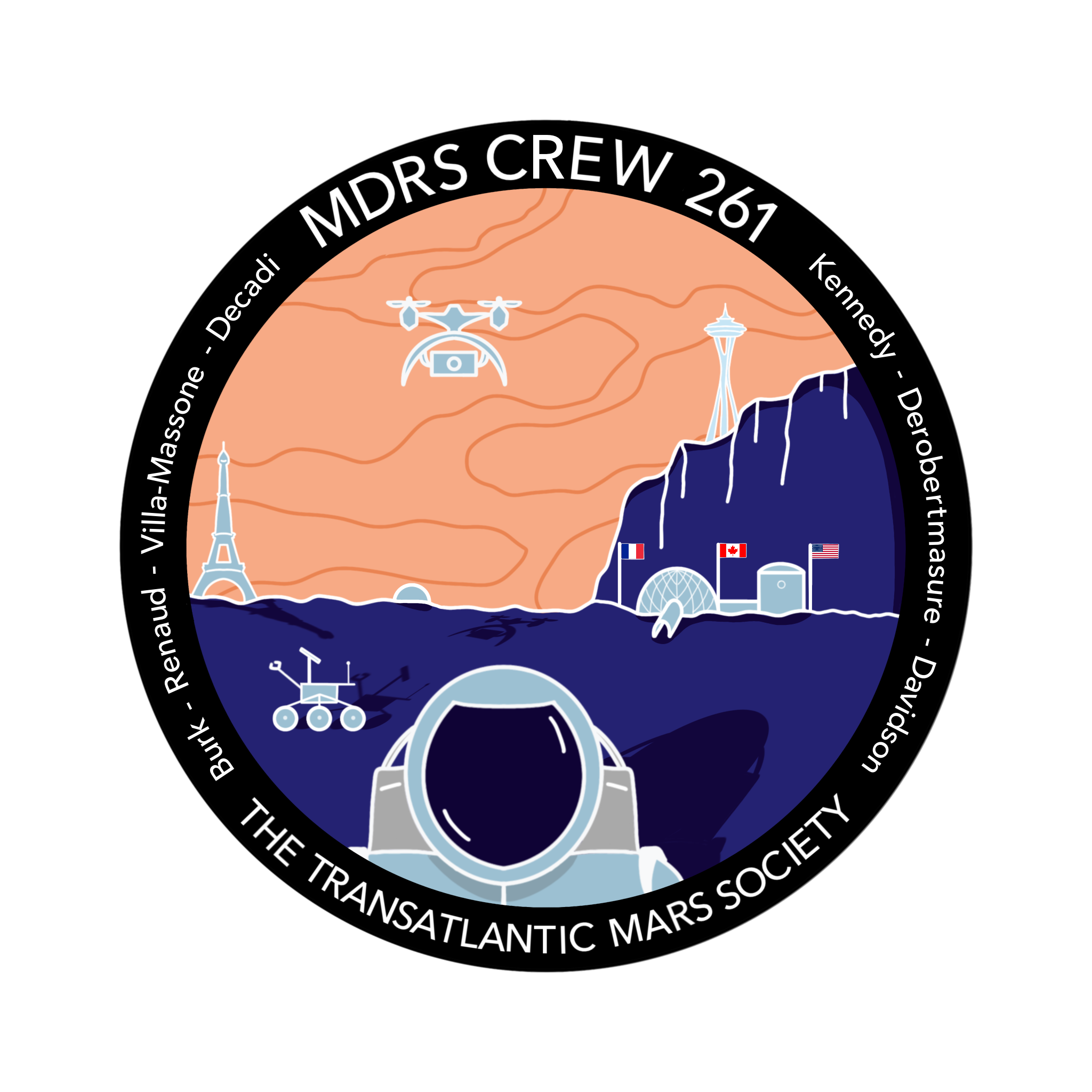
JAMES BURK | Commander
ALINE DECADI | Executive Officer + Crew Astronomer
CÉCILE RENAUD | Greenhab Officer + Crew Biologist
JULIEN VILLA-MASSONE | Crew Engineer
ERIN KENNEDY | Crew Robotics Engineer
AUDREY DEROBERTMASURE | HSO & Medical Officer
KRIS DAVIDSON | Crew Journalist
Overview
Crew 261 began planning our experiments in 2019 when we conducted a call for ideas from the worldwide Mars analog research community. Commander James Burk and XO Aline Decadi worked in partnership with our crewmembers and researchers from across the world to select these experiments that would cover many scientific and technical disciplines. Over the three years we spent planning the mission, the roster of experiments shifted but many have been planned for that entire duration. Two crewmembers (Crew Roboticist Erin Kennedy and HSO Audrey Derobertmasure) originally started out as experiment PIs but were added to the crew due to other vacancies and circumstances that came up during the multi-year planning process.
We believe that our final suite of experiments can help towards solving some of the challenges faced by future Mars astronauts, while also advancing technology and research for long-term human presence on Mars. Some of the work that our crew is conducting during our mission will also directly support the overall Mars Desert Research Station program and the Mars Society’s worldwide analog research efforts.
For further details on all of our experiments including preliminary research results, please access our full End of Mission Research Report.
Here are our 16 experiments:
COSMOS (Cardiovascular Monitoring & Pharmacology on Mars) is a project aimed at optimizing and individualizing drug treatments in space. The team conducted a study called MAEVA (Mars Early Vascular Ageing monitoring) to assess the impact of extreme environments and confinement on early vascular aging markers. They used devices such as the pOpmetre for measuring pulse wave velocity (PWV) and blood pressure monitors to monitor cardiovascular parameters. By measuring PWV, they could evaluate arterial stiffness and assess cardiovascular health. The team also utilized a connected scale to analyze body composition and measure vascular age. The data collected will be analyzed by the INSERM team researchers.
The PASKAL (Pharmacology Space Kit – Analysis) project focuses on understanding the fate of drugs in humans in space. Since the knowledge of space pharmacology is limited, the team proposed using dried blood spot (DBS) and dried urine spot (DUS) sampling methods as an alternative. These methods involve placing drops of capillary blood or urine on blotting paper for analysis. The team conducted a preliminary study using caffeine as a model drug to evaluate the feasibility of DBS and DUS sampling in space. Six crew members collected blood and urine samples before and after caffeine intake to assess its elimination. The samples will be analyzed in a laboratory in France to study drug metabolism in space conditions.
The BIOSTIMULATION project, part of the MELiSSA Program at UMONS, aims to enhance plant germination and growth using Spirulina. Two experiments were conducted in this regard.
In the first experiment, the team focused on improving the germination and early growth of tomato seeds. The experiment took place in the Science Dome using a grown tent. Three types of soil were used: regular commercial gardening soil, soil collected from the Utah desert (Kissing Camel Ridge E), and Martian garden soil called Mojave Mars Simulant 1 (MMS-1). Each soil type was divided into different samples, each with distinct characteristics. Eight tomato seeds were planted in each soil sample and watered with various biostimulation solutions, including water-only as a negative control and compost solution as a positive control. The plants were allowed to grow for 10 days.
The second experiment focused on improving the health and growth of tomato plants. This experiment took place in the GreenHab of the MDRS (Mars Desert Research Station). The tomato plants were watered with the same biostimulation solutions as in the previous experiment. Biostimulation was initiated on SOL 3 and continued until SOL 9. Leaves from the plants were collected for further biochemical analysis.
The ALGACRAFT project, led by Crew Biologist Cécile Renaud and Crew Engineer Julien Villa-Massone, aims to test the growth of spirulina in a photobioreactor for future closed-loop life support systems. Renaud oversees the maintenance of the spirulina culture, including preparing the culture media, filling the photobioreactor, harvesting the spirulina, and measuring biomass production. Villa-Massone handles the software aspect, developing and adjusting the computer code to control the photobioreactor and collect sensor data.
The Algacraft Photobioreactor serves as a controllable electric load for the Smart Grid experiment due to its high power consumption. A harvest of spirulina was conducted on SOL 8, and another harvest is planned three weeks after the mission’s end to analyze the culture’s evolution and potential yield. This research contributes to understanding the viability of using spirulina as part of a sustainable life support system.
The ATMOSPHINDER project, led by Crew Roboticist Erin Kennedy, focuses on investigating seasonal jet eruptions on Mars using a wind-propelled experimental rover. The rover, designed as a prototype, was tested in the Mars analog environment at the Mars Desert Research Station. It featured two sails, environmental sensors, and a custom circuit board controlled by a microcontroller.
The testing revealed two key insights: the advantage of using tensegrity robots with compliant and rigid components in extreme environments like Mars, and the need for improved methods of human-robot interaction when astronauts are fully suited. During the mission, the rover achieved various milestones, including unassisted rolling propelled by the wind, sail trim control based on anemometer readings, and data logging of environmental sensor data mapped to GPS coordinates.
Geological features similar to those in the south polar region of Mars were observed and samples were collected. The results demonstrate the feasibility of using a wind-propelled rover for scientific exploration and indicate the potential for further development of a higher fidelity prototype. The project acknowledges the contributions of the entire crew, thanks to the inspiration from various sources, and expresses gratitude for the mentorship received during the mission.
Further analysis and design details will be included in our End of Mission Research Report, and additional resources such as graphs, maps, videos, photographs, code, and datasets can be accessed through provided links.
ASTRONOMICAL OBSERVATIONS – Aline Decadi, the Executive Officer and Crew Astronomer, conducted various astronomical activities using multiple observatories during the mission. The Musk Observatory, located onsite, was used for solar imaging and processing. Equipped with a Lunt 100 mm refracting telescope and hydrogen alpha filters, it allowed observations of the Sun’s dynamics. Aline learned to configure the telescope using a remote control and practiced different parameters for solar imaging.
Visual observations using the zoom eyepiece revealed phenomena such as granules, which represent the surface of the Sun, prominences along the edge, filaments, sunspots, and flares. Solar imaging was done using a camera, capturing frames for each of the chromosphere, prominences, and flat (imperfections and dust). The frames were processed using software like Autostakkert, Registax, and Photoshop to stack the images, enhance fine details, and merge them into a single image.
The outcomes included observing the Sun’s chromosphere with prominences, granules, sunspots, and filaments. The operation of the observatory, telescope, and computer was nominal, with no tracking errors observed. Some frames were underexposed or overexposed, which could be addressed by fine-tuning the gain and exposure settings. Aline expressed gratitude to Dr. Peter Detterline, the MDRS Observatory leader, for his advice and passion for astronomy. The Musk Observatory was regarded as a beautiful and essential facility for crew safety and survival on Mars.
SAFETY DRILLS were conducted during our mission to improve crewmember safety. One drill took place on Sol 4 when the crew encountered an anomaly during an EVA. A burning plastic smell was detected, causing the Executive Officer, Aline Decadi, to feel ill and lightheaded. A debriefing session was held, and several issues were identified, including technical, medical, and procedural aspects.
Outcomes and recommendations were derived from the drill. It was suggested to keep the air flow of a backpack on while removing the helmet in certain emergency cases, use hand signals for communication, carry water on individuals and have emergency water bottles in the rover, take mandatory water breaks during EVAs, ensure effective communication between rover drivers, conduct comm checks at the beginning of each traverse, and improve the EVA suits to support rapid removal of the helmet and backpack in emergencies. Other recommendations included carrying sugar packets for ill crew members, defining the threshold for breaking sim based on actual fainting, and conducting training sessions on emergency field procedures.
On Sol 5, XO Decadi conducted a training session with all crew members, focusing on exposing potential hazards in the field and training on the quick removal of helmets and backpacks in degraded situations.
Aline Decadi also shared a list of necessary improvements for the suits and backpacks with the Mars-Cal team, responsible for refurbishing the MDRS Space Suits. The improvements included integrating water and urine bags, adding a camera for continuous imaging, enhancing audio/micro features, incorporating a chest box with a mirror for better visibility, allowing quick access to batteries, conducting regular testing of electrical devices, and addressing latch difficulties on the red ring collar.
The Northern California chapter, who does incredible work year after year maintaining and upgrading our suits, acknowledged the list and committed to incorporating the recommended improvements into future upgrades.
The MDRS SMART GRID project, led by Crew Engineer Julien Villa-Massone, aimed to develop a resilient and self-balancing power control system for a Mars base. The system assigned priority levels to controllable electric loads based on safety, comfort, and non-time-critical factors. The Algacraft Bioreactor experiment was chosen as the controllable load, representing a food production farm. The load adjusted its power consumption based on battery state of charge and solar power availability, conserving energy and prioritizing more important loads. A monitoring system was implemented to track the power system’s status and operation.
In addition to the Smart Grid project, Julien Villa-Massone worked on the Station Resources and EVA Monitoring. A water monitor was set up, with manual measurements plotted on a chart to project water utilization throughout the mission. Power measurements were automated and displayed on a system schematic, providing insights into resource utilization. An EVA map showed crew members’ current and historical locations in near real-time, enhancing situational awareness during EVAs.
The outcomes of the resource monitor included better water resource management and a deeper understanding of the power system. The EVA map contributed to a safer environment during EVAs and improved situational awareness for the crew. During an emergency drill, the rescue team was able to reach a crew in need of assistance within 22 minutes thanks to the EVA map system.
Overall, these projects aimed to ensure the availability of sufficient energy at all times and enhance crew safety and resource management at the Mars Desert Research Station.
Kris Davidson, the JOURNALIST/ARTIST IN RESIDENCE for Crew 261, documented crew experiments, projects and activities for three purposes: 1. For documentation and PR/Marketing material for the Mars Society 2. For documentation and for individual crew members, and 3. For Davidson’s ongoing art project that looks at American storytelling across time, intended for book publication and creation of artwork.
In her capacity as the crew journalist, Davidson photographed and created videos of the crew going about their work, and she wrote daily editorials weaving in the narrative of each Sol. She provided support to the Commander in coordinating two media visits. Davidson also created, updated and maintained the crew website https://www.transatlanticmarscrew261.com.
At the conclusion of the mission, Davidson will edit and process the images, and the upload selects to a private, password protected website for The Mars Society and crew members. She will also update the website based on the final report and maintain it as a comprehensive record of the work performed on the mission.
MARSVR – VIRTUAL REALITY COORDINATED FIELD SCIENCE DEMONSTRATION
The MarsVR project, initiated by Commander James Burk, aims to create a digital twin of the Mars Desert Research Station (MDRS) and its surrounding terrain for various applications such as crew training and public outreach. Burk was inspired by NASA’s use of Microsoft Hololens to plan science operations for the Curiosity rover and believed that more people should experience this technology. After nearly seven years of development, the MDRS digital twin experience is now amazingly detailed and available for free download on the Steam video game platform.
During MDRS Crew 261’s mission, the team demonstrated a new version of the MarsVR technology to the crew and discussed its potential for planning and supporting EVAs. Technical issues prevented the full implementation of the newer MarsComms shared experience with multiple crew members using it at once, but a demo was conducted using a single working Quest 2 headset and we were able to connect remotely with Jeff Rayner, who was in Seattle, while we were in the lower deck of the MDRS Hab.
In 2022, the MarsVR team partnered with the Mars Society’s Chicago chapter to begin to integrate EVALink, a low-cost radio device system, into MarsVR. This integration allows for the capture of EVA crewmember positional data in near-real time, enhancing the VR experience and enabling coordinated field science scenarios.
Looking ahead, the wider MarsVR team will continue working on the project, and individuals from Crew 261 will remain involved. The goal is to make the MarsVR technology available for future MDRS crews and showcase it as a successful volunteer-driven effort by the Mars Society. The vision of using virtual reality to explore Mars remains a priority, and Crew 261 is committed to realizing this vision.
EVALINK is an integrated system that utilizes low-cost Meshtastic devices to capture and transmit crewmember positional data in near real-time at analog research stations. Its goal is to improve science, situational awareness, and crew member safety.
During MDRS Crew 261’s mission, EVALink was tested and troubleshooted in collaboration with the remote EVALink and MarsVR teams in Chicago and Seattle, respectively. The team utilized two models of Meshtastic devices: the T-ECHO device, which can be worn by crewmembers, and the T-BEAM device, which can be integrated with larger components.
A total of 10 Meshtastic devices were deployed, including field units and a relay unit for data transmission to a cloud-based server. All devices were functional, and each EVA crewmember carried one or more devices on their person during EVAs.
The team successfully collected positional data from all EVAs and utilized a Discord-based radio relay to record EVA audio transmissions. These achievements were significant for the MDRS program and a source of pride for the EVALink, MarsVR teams, and Crew 261.
Audio recordings of the EVAs have been processed, and anecdotal visualizations of some EVAs on terrain maps have been received. The team plans to showcase the EVAs by integrating map locations, photos, audio, drone footage, and other videos to tell the story of an MDRS EVA in a new way.
In addition to EVALink, Crew 261 developed their own Garmin-based solution using commercial Garmin inReach devices with satellite-based positioning functionality. This solution enhances radio communications and situational awareness of EVA crew positions and statuses. It provides near-real-time visualization of crewmembers, allows the crew to send GPS waypoints as points of interest, and enables text messaging between the Hab and crewmembers.
RESEARCH FILE SERVER – The crew installed a Synology NAS file server with hybrid cloud capabilities during their mission. The server was intended for storing and sharing large amounts of computer files, including crew photography, drone footage, research data, and the Mars Society’s archive. The server allowed crews to reference past learnings and research objectives without relying on real-time internet access, simulating the communication delay experienced on Mars.
The recommended server model was the Synology NAS DiskStation® DS1522+ with Seagate IronWolf drives in a Raid 10 configuration. Due to time constraints, the server was temporarily set up on a table in the Science Dome instead of being installed permanently.
Although the server was successfully set up, the crew encountered power system issues that caused frequent power outages. As a result, the server required manual intervention to restart. Given the power problems, the crew decided not to put the server into operational use and instead focused on improving power monitoring.
File sharing activities and permanent storage of research were carried out using cloud-based services like Google Drive and Google Photos instead of the onsite server. The plan is to pack up the server at the end of the mission and prepare it for the next field season, hoping to have power system upgrades to improve reliability.
COPING STRATEGIES SURVEY – Andrees Kaoosar from the University of Central Florida conducted a study on crewmember behavior in extreme environments. The study involved completing self-assessment scales to evaluate changes in mood, anxiety, and social behavior during the mission. Additionally, a daily journal entry was proposed to help crew members become aware of their feelings, improve communication, and reflect on effective coping strategies.
The participating crew members found the opportunity to journal daily beneficial. The consistent and brief questions allowed for easy integration into their busy schedules. Many crew members reported that the survey had a positive impact on their overall experience during the mission, helping them effectively manage their emotions and interactions with others.
The study’s results will provide valuable insights into individual behavioral reactions and their adaptation within a mission-oriented team. This knowledge can contribute to optimizing team composition, providing strategies for emotional control, and fostering efficient communication among team members.
PROOF-OF-CONCEPT OF RECON & EMERGENCY DRONE W/ 8K 360 VR CAPABILITIES
The Adapa 360 team, a partner on the Mars Society’s MarsVR project, is very experienced with building VR-enabled cameras and mounting them to custom-built drones, and have been doing that for over a decade, since before commercial products were available with similar capabilities.
The Adapa team created two high-performance drones with VR-enabled 8K-resolution 360 cameras that were intended for our mission. Crew Engineer Julien Villa-Massone traveled to Spain to meet with the team and test flying the drones. During their meeting, it was determined that we would take the newer and smaller drone, even though it was not a mature platform and did not have adequate testing prior to the mission.
Due to a power spike issue between the camera and the drone, we were not able to get the camera working during a drone flight, so unfortunately this experiment was a failure.
The SCOUT, SAMPLE, and MAP (SSAM) ROVER, developed by Nexus Aurora, is a prototype designed for high-fidelity mapping and exploration of mission areas. Nexus Aurora is a community-based project incubator focused on open-source solutions for space settlement.
The Nexus Aurora team collaborated with Crew 261 in the early stages of mission planning. Initially, there were two experiment ideas selected with Nexus Aurora as the principal investigators. The first idea involved autonomous farming and creating a scalable system to maintain and monitor crops. However, due to the COVID-19 pandemic and mission delays, this experiment was discontinued.
The second experiment, which evolved into the Scout Platform, initially aimed to develop a sample collection solution using multiple small rovers and a base station. However, due to implementation challenges, the team pivoted to a Sojourner-sized rover with an open hardware platform. The goal is to create a commercially available Mars rover that can be customized for various mission objectives.
Unfortunately, the Scout rover did not arrive at the Mars Desert Research Station (MDRS) in time for Crew 261’s mission. The Nexus Aurora team faced logistical challenges in transporting the rover to Utah. The rover is currently awaiting delivery at a facility in Salt Lake City.
The plan is to work with the upcoming crew, the University Rover Challenge staff, and the MDRS mission support team to uncrate and set up the rover for remote testing at MDRS. The goal is to allow the Nexus Aurora team to perform testing before the rover is returned to them.
Although Crew 261 was unable to test the Scout rover during their mission, they express gratitude for the support and dedication of the Nexus Aurora team. They look forward to collaborating on future projects with Nexus Aurora.
The MARSCOIN project, led by Lennart Lopin, aims to create a digital currency specifically for Mars. Based on Litecoin and derived from Bitcoin, Marscoin has been maintained since 2014 with no significant issues and is listed on various crypto exchanges.
The Marscoin development team has built several software products on top of its stable blockchain, including the Martian Republic. This eGovernment application enables identity services, direct voting, and data storage on the blockchain. Commander Burk and Crew 261 provided requirements for the Martian Republic software, incorporating it into our mission planning.
The objective of our mission was to be the first MDRS crew to utilize blockchain technology for inventory tracking and e-voting. We intended to set up a Marscoin node on the File Server with cloud-based redundancy. However, due to power issues, we opted for an initial demo using a cloud instance of the Martian Republic application.
During our mission, we conducted inventories of HSO supplies and food. The results were successfully saved into the Marscoin blockchain using the Martian Republic application, making us the first crew on Mars to utilize blockchain for routine functions such as inventory management.
Conclusion
In conclusion, Transatlantic Mars Crew 261 conducted a wide range of experiments and projects aimed at advancing research and technology for future Mars missions. Despite encountering challenges and limitations, the crew made significant progress in various scientific fields and contributed valuable data to the Mars Society and the Mars Desert Research Station (MDRS) program.
The crew successfully conducted experiments such as COSMOS and PASKAL, which focused on cardiovascular monitoring and pharmacology in space. These studies provided valuable insights into the impact of extreme environments on the human body and drug metabolism in space conditions. The BIOSTIMULATION project aimed to enhance plant growth using Spirulina, while the ALGACRAFT project explored the growth of Spirulina in a photobioreactor for potential use in closed-loop life support systems.
The crew also conducted experiments related to astronomy, safety drills, power control systems, coping strategies in extreme environments, and the integration of virtual reality technologies. The outcomes of these experiments and projects included improved understanding of the Sun’s dynamics, enhanced crew safety protocols, advancements in power control systems, and insights into behavioral reactions in extreme environments.
Despite some setbacks, such as the delayed arrival of the SCOUT ROVER and technical issues with the ADAPA 360 drone, the crew remained committed to their mission objectives and expressed gratitude to their partners and collaborators for their support.
The achievements of Crew 261 contribute to the collective knowledge and progress in human space exploration, particularly in the context of future Mars missions. The valuable data and experiences gained during this mission will inform future research and mission planning, and the crew looks forward to continued collaboration and involvement in future projects.


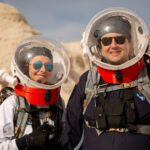

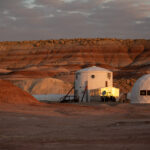
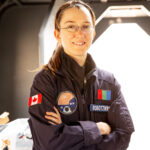
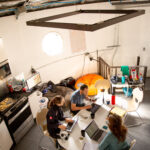
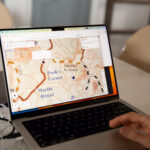
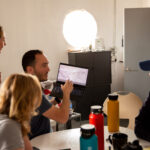
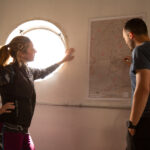
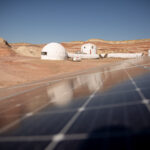

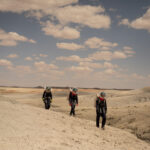

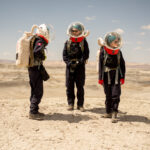

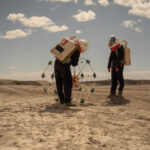

You must be logged in to post a comment.